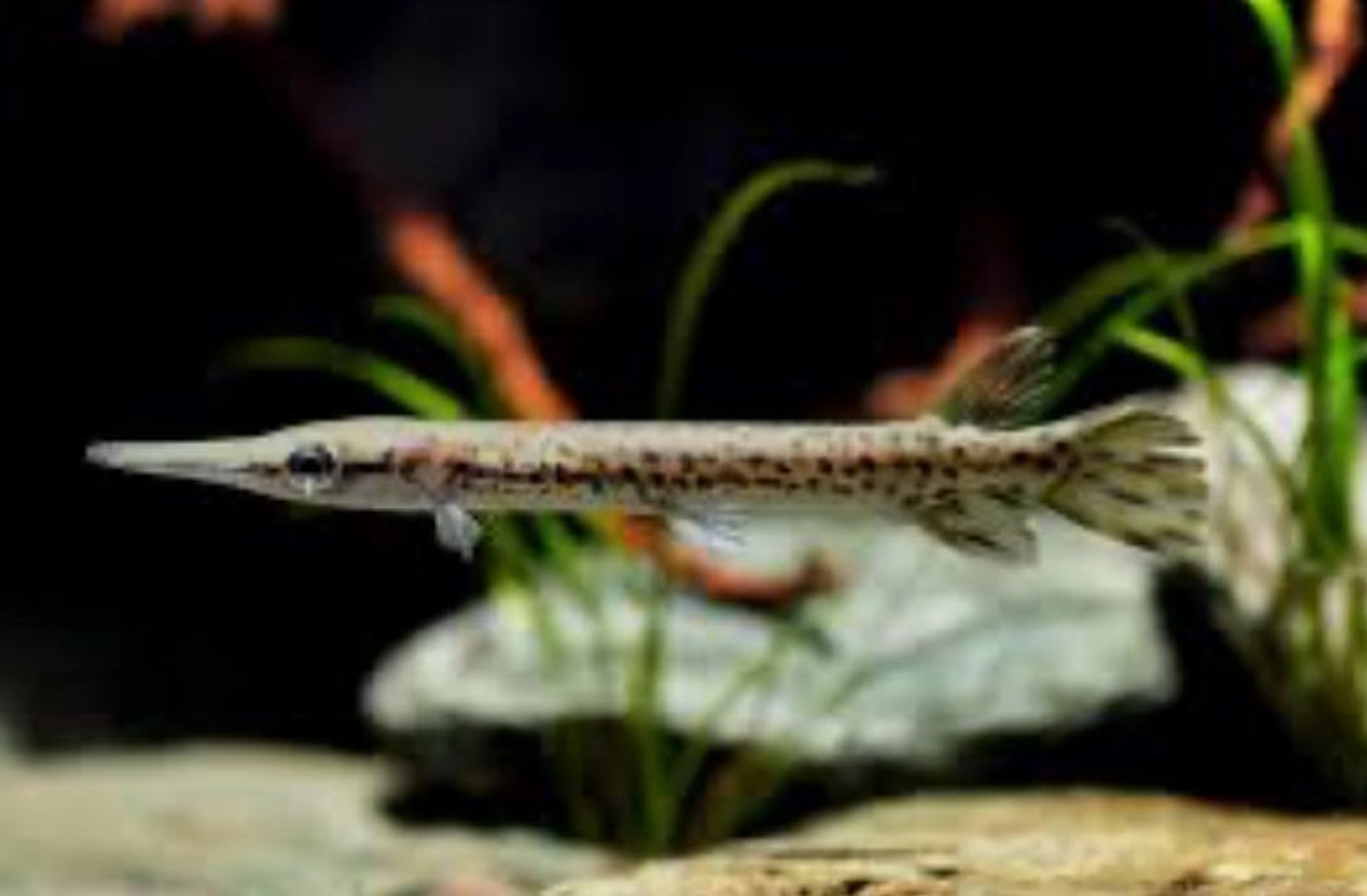

Product Details

Size
10cm - 10.16cm

Temperament
Aggressive
-"Add the fascinating 4-inch Alligator Gar to your aquarium! Known for their prehistoric look and impressive predatory behavior, these fish are a captivating choice."
Detailed Description:
Overview: The Alligator Gar (Atractosteus spatula) is a fascinating and ancient species of freshwater fish that can trace its lineage back over 100 million years. These predatory fish are known for their distinctive, elongated bodies and sharp teeth, resembling the formidable reptile they are named after. At 4 inches in size, these juvenile Alligator Gars bring a unique and intriguing presence to any large aquarium. Suitable for experienced aquarists, Alligator Gars require specific care and spacious environments to thrive.
Appearance:
- Coloration: Juvenile Alligator Gars typically exhibit a greenish or brownish hue with darker spots or stripes along their bodies, which helps them blend into their natural habitat.
- Body Shape: Characterized by a long, torpedo-shaped body, broad snout, and sharp, interlocking teeth. Their scales are hard and diamond-shaped, providing a protective armor.
- Size: At 4 inches, these juveniles are still growing and can eventually reach lengths of up to 10 feet (3 meters) in the wild. In captivity, they typically grow to about 3-4 feet (1-1.2 meters) depending on tank size and care.
Water Conditions: To ensure the health and growth of Alligator Gars, maintain the following water conditions:
- Temperature: 75-86°F (24-30°C).
- pH Range: 6.5-7.5.
- Water Hardness: 10-20 dGH.
- Tank Size: A minimum of 200 gallons is recommended for juvenile Alligator Gars, with larger tanks or even indoor ponds required as they grow to accommodate their size and activity level.
Tank Setup: Creating an ideal habitat for your Alligator Gar involves several considerations:
- Substrate: Use a fine gravel or sand substrate that mimics their natural riverbed environment.
- Decor: Include large driftwood, rocks, and sturdy plants that provide hiding spots and create a naturalistic setting. Ensure plenty of open swimming space as Gars are active and need room to maneuver.
- Filtration: A robust filtration system is essential to maintain clean water, as Alligator Gars produce significant waste. Ensure strong water flow to replicate their natural habitat.
- Lighting: Moderate lighting is sufficient. Avoid overly bright lights as they can stress the fish.
Tank Mates: Alligator Gars are predatory and can be aggressive, so choose tank mates carefully:
- Compatible Species: Larger, robust fish that can coexist with their predatory nature, such as other large cichlids, large catfish, and similarly sized predatory fish.
- Incompatible Species: Avoid small, slow-moving fish that can be seen as prey. Delicate or peaceful species are not suitable as they can become targets of aggression.
Feeding Habit: Alligator Gars are carnivorous with specific dietary needs. Provide a varied diet to keep them healthy and vibrant:
- Staple Diet: High-quality carnivore pellets or sticks.
- Supplements: Offer live or frozen foods such as fish, shrimp, and insects to replicate their natural diet and provide necessary protein.
- Feeding Frequency: Feed them once or twice daily, ensuring they consume the food quickly to avoid water contamination. Monitor feeding to prevent overfeeding and maintain water quality.
Care and Maintenance: Regular care and maintenance are crucial for the well-being of your Alligator Gar:
- Water Changes: Perform weekly water changes of 20-30% to maintain optimal water conditions and reduce waste buildup.
- Health Monitoring: Watch for signs of common fish diseases such as ich, fungal infections, and parasitic infestations. Early detection and treatment are vital.
- Behavioral Observation: Observe their behavior regularly. Healthy Alligator Gars are active, alert, and responsive to their environment.
Breeding: Breeding Alligator Gars in captivity is challenging and rarely achieved due to their specific requirements and large size:
- Pair Selection: Ensure you have a compatible pair, although distinguishing males from females can be difficult.
- Spawning Environment: Provide a large, well-structured breeding tank or pond with optimal water conditions and plenty of hiding spots.
- Fry Care: If breeding is successful, the fry will need separate care and a diet of small live foods. Juveniles are particularly sensitive to water conditions and require diligent care.
Aligator Gar 4" below
Product Options
Regular
Delivery
 AngelHub Aquatics Boon Keng
AngelHub Aquatics Boon Keng Aquarium Fishes, Tanks & Supplies From AngelHub Aquatics Boon Keng


 SG
SG



